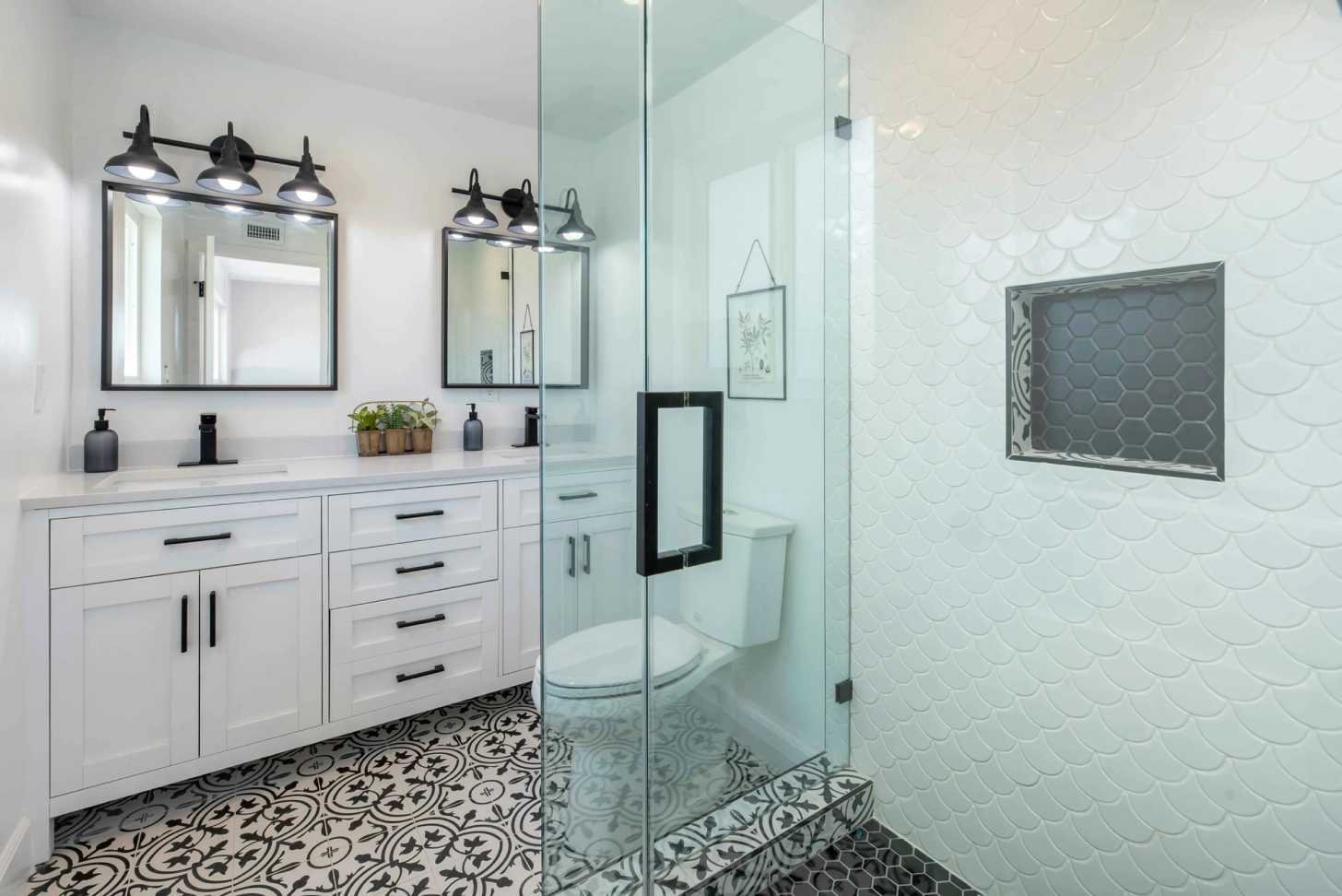Remodeling a small bathroom begins with setting clear objectives and establishing a budget. First, determine what you want to achieve with the remodel. Are you aiming to improve functionality, update the look, or make the space feel more significant? Identify the main issues with your current bathroom, such as outdated fixtures, lack of storage, or poor layout.
Setting Clear Objectives and Budget
Once you have a clear vision, set a realistic budget for materials, labor, permits, and unexpected expenses. Research the average price of bathroom remodels in your area to understand what to expect. It’s also wise to include a contingency fund for unforeseen issues during the project.
Creating a detailed plan and timeline will help you stay organized and ensure that each remodel phase is completed on schedule. Decide whether you will hire a professional contractor or handle the project yourself. While professionals can offer expertise and efficiency, a DIY approach may save money but require more time and effort.
Maximizing Space and Functionality
Maximizing space and functionality is crucial in a small bathroom. Begin by carefully considering the layout and how you can best use the available space. Sometimes, reconfiguring the placement of fixtures can make a significant difference. For example, a corner sink can free up floor space, and a wall-mounted toilet can create a more open feel.
Storage solutions are essential in a small bathroom. Opt for vertical storage options, such as tall cabinets or shelving units, to clear the floor area. Recessed shelves and built-in niches can also provide storage without wasting valuable space. Consider using multi-functional furniture, like a vanity with drawers, to maximize storage and maintain a clutter-free environment.
Lighting is another crucial factor in making a tiny bathroom feel more extensive and more inviting. To brighten the space, use a combination of overhead lighting, task lighting around the vanity, and accent lighting. Mirrors can also enhance the perception of space by reflecting light and creating a sense of depth.
Choosing Materials and Finishes
Selecting suitable materials and finishes is critical to achieving a stylish and functional small bathroom. Opt for light-colored tiles and paint to create a sense of openness and make the room feel larger. Large-format tiles can minimize grout lines and give the impression of a more expansive floor and wall area.
Consider using reflective materials, such as glass and glossy finishes, to bounce light around the room and enhance the feeling of space. For the flooring, choose durable and water-resistant materials, such as ceramic or porcelain tiles. Heated floors can add a touch of luxury and make the bathroom more comfortable.
When it comes to fixtures, choose space-saving designs that do not compromise style. Wall-mounted faucets and streamlined fixtures keep the space feeling open and uncluttered. Additionally, incorporating a glass shower enclosure instead of a shower curtain can visually open up the space and make the bathroom feel larger.
Demolition and Structural Changes
Once you have a clear plan and have chosen your materials and finishes, it’s time to begin the demolition and structural changes. This phase involves removing existing fixtures, cabinetry, and flooring that will be replaced. Ensure you take proper safety precautions, such as wearing protective gear and shutting off water and electricity to the bathroom.
During demolition, inspect the underlying structure for any issues, such as water damage or mold, that must be addressed before proceeding with the remodel. Repair any damage and ensure the subfloor and walls are in good condition to support the new fixtures and finishes.
If your remodel includes structural changes, such as moving plumbing or electrical lines, now is the time to make those modifications. These changes can be complex and may require the expertise of a licensed professional to ensure they comply with local building codes and regulations.
Installation and Final Touches
The final phase of your small bathroom remodel involves installing new fixtures, cabinetry, and finishes. Begin by installing larger fixtures, such as the toilet, sink, shower, or bathtub. Ensure each piece is aligned correctly and securely fastened to avoid future issues.
Next, focus on the walls and flooring. Install tiles, paint, or apply other finishes according to your design plan. Take time to ensure a professional and polished look, as these surfaces will be evident and subject to frequent use. Use proper waterproofing and sealing techniques for tile installations to prevent water damage.
Once the significant installations are complete, add the finishing touches that enhance functionality and aesthetics. This includes installing lighting fixtures, mirrors, towel racks, and other accessories. Pay attention to details like caulking and grout lines to ensure a clean and finished appearance.
Finally, thoroughly inspect your new bathroom to ensure everything functions properly and meets your expectations. Address any minor issues or adjustments before considering the project complete.



